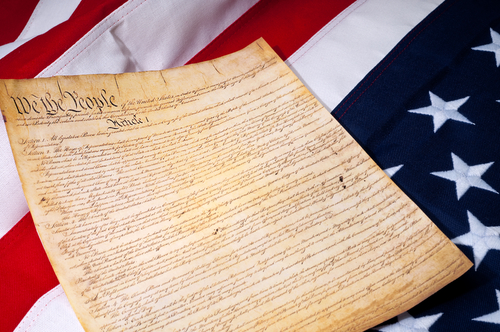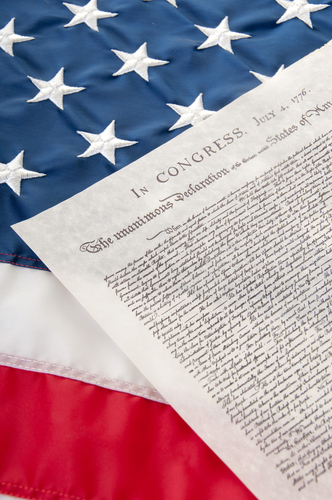Table of Contents

12th Amendment Overview
The 12th Amendment to the United States Constitution is one of the most important amendments added to the Constitution. It is a crucial amendment that has changed the way elections operate in the country drastically. The origins of the amendment can be traced back to the infamous Election of 1800 – a divisive and tumultuous election between Thomas Jefferson and Aaron Burr. This article delves into the history and impact of the 12th Amendment in the United States.
The Election of 1800 was a defining moment in the young nation’s history. It was contested by two parties: the Federalists, who supported John Adams as President, and the Democratic-Republicans, who under Thomas Jefferson sought to unseat him. Elections in those days operated differently from the system in place today, and each of the presidential candidates had running mates who were also eligible for the presidency. This meant that the candidate who received the majority of electoral votes would be named President, while the second-highest vote-getter would be Vice President.
The Electoral College would be made up of people who would cast their votes on behalf of their states. The chosen electors were free to vote for anyone they wished, and there were no strict requirements for their voting allegiances. This system created chaos and uncertainty during the election of 1800. The Federalists were unhappy with the outcome of the contentious election, and it was this dissatisfaction that led to the drafting and ratification of the 12th Amendment.
The 12th Amendment was ratified on June 15, 1804. The amendment was one of several significant compromises made during the early years of the country’s history, and its main objective was to ensure that future presidential elections would be more consistent and fair.
The amendment contained several provisions aimed at addressing the problems that had arisen in the 1800 election. Perhaps the most significant change was that electors would vote separately for president and vice president, ending the process of the runner-up becoming vice president. The top two candidates in the Electoral College would be named President and Vice President, respectively. This change was designed to prevent situations like the one that arose in 1800 from occurring again.
Another important change in the 12th Amendment was the provision that the President and Vice President must hail from different states. This was done to prevent the possibility of a President and Vice President from the same state coming into power. This change was mainly due to the perception that a concentration of power in one region or state could destabilize the political system.
The 12th Amendment has had a major impact on the election process in the United States. The amendment has ensured that the President, as well as the Vice President, are elected consistently. The earlier system, where the electoral college voted for both positions, led to situations in which the President and Vice President might belong to different parties or had contrary political beliefs. The 12th Amendment improved the stability of the election process, and it has remained a crucial part of the Constitution to this day.
Throughout the years, the 12th Amendment has been tested, and court cases have been fought over the interpretation of its provisions. Despite these legal challenges, the amendment remains central to the American election system, and any changes to it would be highly contested. The principles underlying the 12th Amendment, namely ensuring a fair and stable election process, have not changed over the years.
It is worth noting that the 12th Amendment has been criticized by some for its failure to address all the issues that arise in the election process. One such issue is the current Electoral College system, in which smaller states are overrepresented, leading to situations in which a candidate who receives fewer popular votes can still win the presidency. Nevertheless, many believe that the 12th Amendment remains a crucial aspect of the Constitution that has prevented the chaos that occurred during the Election of 1800 from happening again.
In conclusion, the 12th Amendment to the United States Constitution is a critical element of the country’s political system. Its ratification in 1804 marked a significant shift in the way presidential and vice presidential elections were conducted. It has been central to many of the critical events in American history, from the Civil War to the present day. Today, the 12th Amendment remains a fundamental component of the Constitution and ensures that the election process is stable and fair.
Twelfth Amendment: Outlines procedure for electing the President and Vice President of the United States.
What is the Twelfth Amendment?
The Electors shall meet in their respective states, and vote by ballot for President and Vice-President, one of whom, at least, shall not be an inhabitant of the same state with themselves; they shall name in their ballots the person voted for as President, and in distinct ballots the person voted for as Vice-President, and they shall make distinct lists of all persons voted for as President, and all persons voted for as Vice-President and of the number of votes for each, which lists they shall sign and certify, and transmit sealed to the seat of the government of the United States, directed to the President of the Senate.
The President of the Senate shall, in the presence of the Senate and House of Representatives, open all the certificates and the votes shall then be counted.
The person having the greatest Number of votes for President shall be the President if such number be a majority of the whole number of Electors appointed; and if no person have such majority, then from the persons having the highest numbers not exceeding three on the list of those voted for as President, the House of Representatives shall choose immediately, by ballot, the President.
But in choosing the President, the votes shall be taken by states, the representation from each state having one vote; a quorum for this purpose shall consist of a member or members from two-thirds of the states, and a majority of all the states shall be necessary to a choice. And if the House of Representatives shall not choose a President whenever the right of choice shall devolve upon them, before the fourth day of March next following, then the Vice-President shall act as President, as in the case of the death or other constitutional disability of the President
The person having the greatest number of votes as Vice-President, shall be the Vice-President if such number be a majority of the whole number of Electors appointed, and if no person have a majority, then from the two highest numbers on the list, the Senate shall choose the Vice-President; a quorum for the purpose shall consist of two-thirds of the whole number of Senators, and a majority of the whole number shall be necessary to a choice. But no person constitutionally ineligible to the office of President shall be eligible to that of Vice-President of the United States
The Twelfth Amendment Defined:
The Twelfth Amendment to the United States Constitution outlines the necessary procedure for electing the President and Vice President. The Twelfth Amendment replaced Article II, Section 1, and Clause 3, which offered the original procedure by which the Electoral College was created and how it subsequently functioned. The Article was ratified following problems during the election of 1796 and 1800.
The Twelfth Amendment was proposed by Congress on December 9, 1803, and was later ratified by the required number of state legislatures on June 15, 1804.
Before the adoption of the Twelfth Amendment, the Electoral College stated that each elector could cast two votes; each elector was not permitted to vote for two people who are a part of the same state as that elector. That being said, if exactly one person received a vote from the majority, that person won the election. If there was more than one individual who received the majority vote from the electors, the House of Representatives would choose who would be president. If no individual possessed the majority, then the House of Representatives would choose five individuals with the largest amount of electoral votes. In both scenarios, the House was necessary for a candidate to be chosen, President.
For the Vice President to be elected, the person with the greatest number of votes, except for the individual elected President, was anointed Vice President. Unlike the President, the Vice President did not require the majority vote of electors.
This confusing and broken process complicated the election of 1796 and 1800, where for example in 1796, John Adams (Federalist Party) received a majority of the electoral votes and the Democratic-Republican Party presidential candidate—Thomas Jefferson—received the second-highest total of electoral votes effectively making him Vice President.
Stipulations of the Twelfth Amendment
The Twelfth Amendment did not change the composition of the Electoral College but did change the process whereby a President and Vice President were elected.
Under the Twelfth Amendment, each singular elector must cast distinct votes for both the President and the Vice President, instead of placing two votes for President. Additionally, no elector may vote for both candidates of a presidential ticket
The Twelfth Amendment also precluded those ineligible to be President from also being Vice President.
When nobody obtained a majority, the process did not change. The Senate chose the Vice President if no candidate received a majority; however, they can only choose between one of the two Vice Presidential candidates with the highest vote total.
Proposal and Ratification:
On December 9, 1803, Congress proposed the Twelfth Amendment and the following states ratified the amendment:
1. North Carolina (December 21, 1803)
2. Maryland (December 24, 1803)
3. Kentucky (December 27, 1803)
4. Ohio (December 30, 1803)
5. Pennsylvania (January 5, 1804)
6. Vermont (January 30, 1804)
7. Virginia (February 3, 1804)
8. New York (February 10, 1804)
9. New Jersey (February 22, 1804)
10. Rhode Island (March 12, 1804)
11. South Carolina (May 15, 1804)
12. Georgia (May 19, 1804)
13. New Hampshire (June 15, 1804)
Ratification was finished on June 15, 1804, and it was subsequently ratified by Tennessee on July 27, 1804. Additionally, the Following states rejected the Amendment: Delaware on January 18, 1804, Massachusetts on February 3, 1804, and Connecticut on May 10, 1804.


























